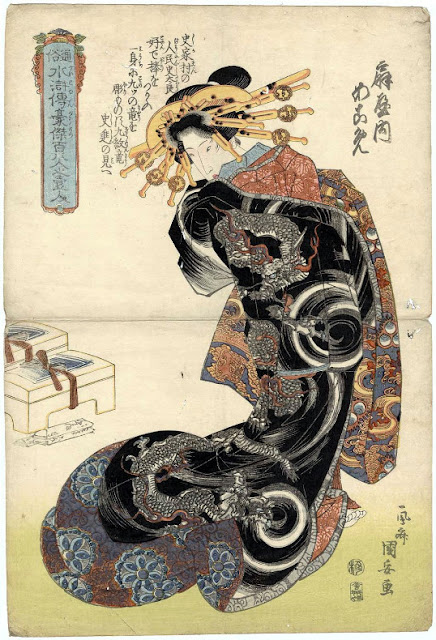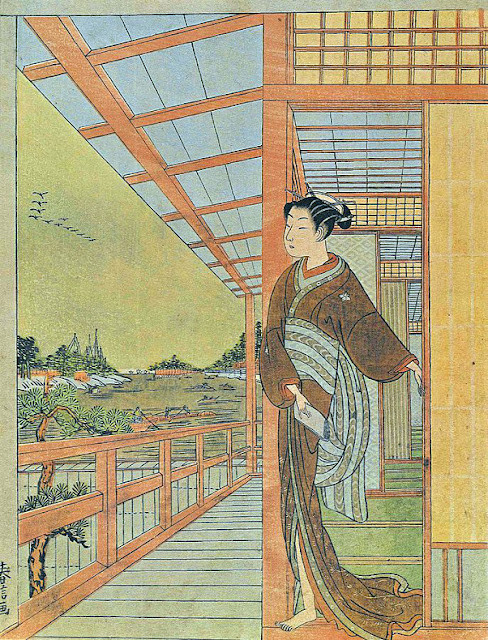 |
| Kyōsai: May, (Shōki Riding a Tiger) |
This is a triptych by Kawanabe Kyōsai (1831-1889), a skilled artist who considered himself the heir of Hokusai. He made woodblock prints and painted; in addition to that, he was the first political caricaturist in Japan, which caused him three jail sentences.
This triptych from 1887 is part of a series with the twelve months. It represents May, which is also written in English to the right.
Riding on a tiger is Shōki, the Demon Queller. He was a protector against demons and disease. Originally Chinese, as Chung Kwei, he was adopted by the Japanese during the 12th century. Shōki frequently appears as a motive in ukiyo-e.
On Boy's Day, in the 5th month, people used to hang pictures of Shōki, so Kyōsai let him represent May.



